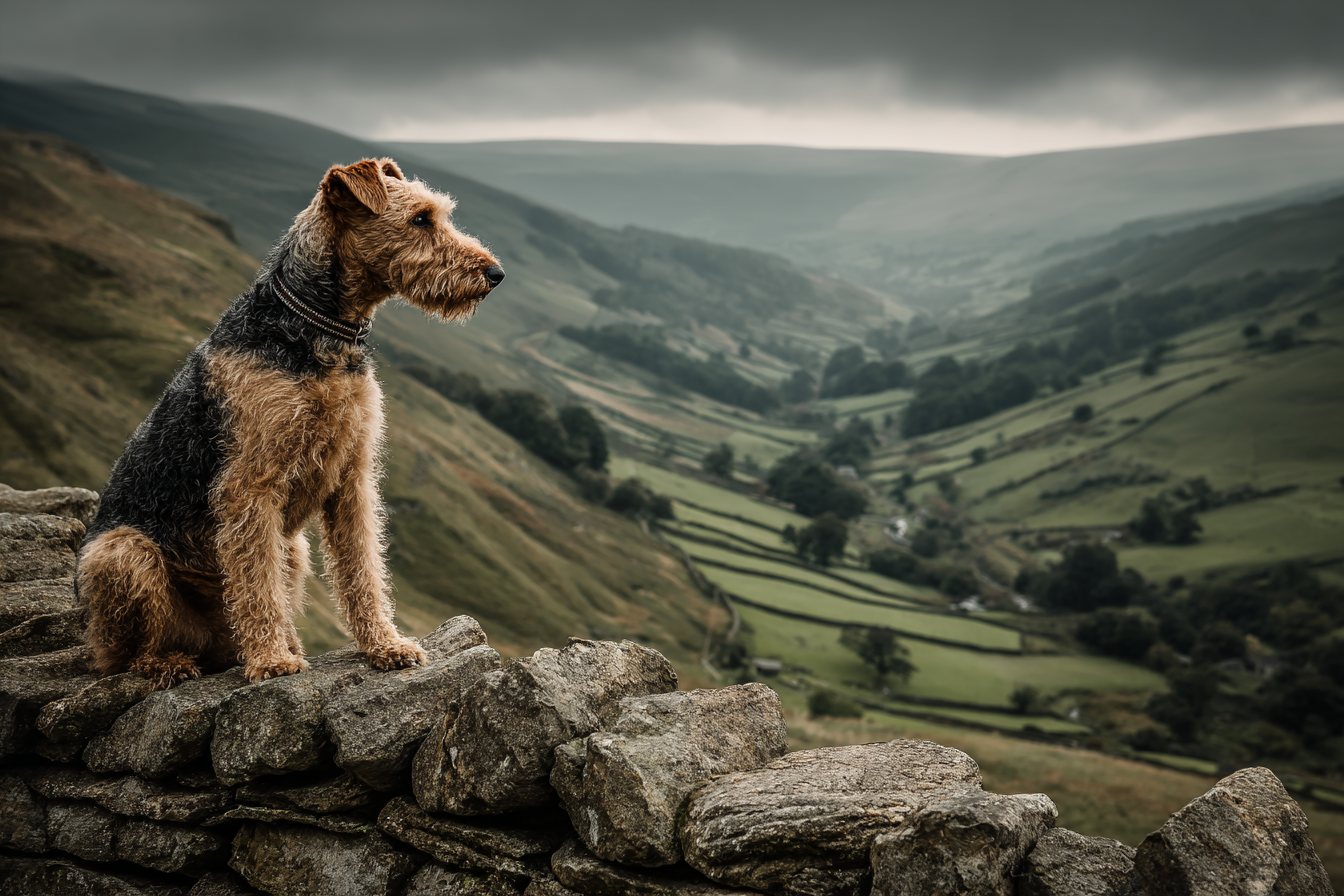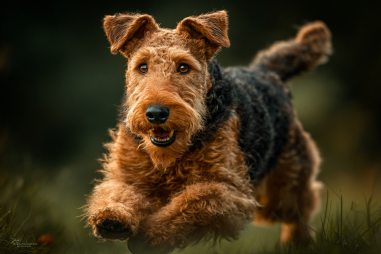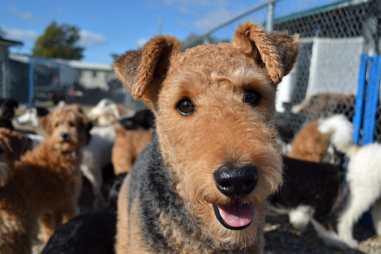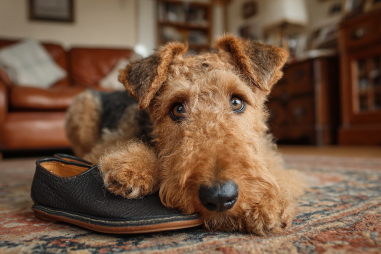The Airedale Terrier, often called the “King of Terriers,” is a breed with a rich and fascinating history that has left an indelible mark on the world of dogs. Known for its intelligence, versatility, and friendly nature, the Airedale Terrier’s past traces back to the moors and valleys of Northern England. Understanding its origins, development, and the important roles it has played throughout history provides insight into what makes this breed so unique and beloved today.
Origins in Northern England
The story of the Airedale Terrier begins in the 19th century along the rugged landscapes of northern England, specifically around Yorkshire. This region, with its steep hills, rivers, and moors, was home to many working-class communities who required hardy, intelligent dogs to assist with hunting and guarding. The breed’s creation is attributed to crossing local black and tan terriers with the Otterhound, among other breeds, which contributed to the Airedale’s distinct appearance and abilities.
The combination of these breeds was intentional, as local hunters sought a dog that could be both a capable retriever and a tenacious rat catcher. The result was a dog with a strong, wiry coat weather-resistant enough for the local climate, impressive stamina, and an energetic personality that thrives on work and companionship.
The Role of the Aire Valley
The Aire Valley, which runs along the River Aire in Yorkshire, played a critical role in the development of this terrier. The valley’s communities relied on dogs that could navigate difficult terrain and assist in hunting otters, a popular sport and a necessity to protect fish stocks. The terriers of this area became specialized hunters, blending courage, agility, and tenacity.
The name “Airedale” originates from this valley, with “dale” meaning valley. Over time, the dogs bred in this region became recognized for their specific qualities, setting them apart from other terriers. Their versatility was unmatched—they could hunt, guard, and retrieve, making them invaluable to residents of the Aire Valley and beyond.
Breed Development and Standardization
As the 19th century progressed, the demand for a standardized Airedale Terrier grew. Dog shows and breed clubs began to promote and regulate the breed’s characteristics, ensuring consistency and preserving the qualities that made the Airedale special. The first breed standard was written in the late 1800s, detailing the dog’s size, coat texture, and coloration—typically a distinctive tan with a black saddle.
These standards helped the breed gain recognition beyond its regional roots, elevating the Airedale Terrier’s status from a working-class dog to one appreciated by breeders and enthusiasts throughout the UK and eventually internationally. This formal recognition also encouraged selective breeding focused on temperament and health alongside physical appearance.
Historical Working Roles
The Airedale Terrier’s intelligence and versatility meant it was employed in various working roles throughout history. Originally, it was prized as a hunter of otters and other small game. It also served as a rat catcher, an important role in rural and urban settings where vermin control was critical.
Beyond hunting and vermin control, the Airedale was used on farms and estates to chase off intruders, protect livestock, and assist in general tasks requiring alertness and determination. Their adaptability made them reliable partners for farmers, hunters, and families alike.
Military and Police Use
One of the most remarkable chapters in Airedale Terrier history is their service in military and police forces. During World War I, their intelligence, bravery, and endurance were put to the test on the front lines. They served as messenger dogs, sentry dogs, and even as rescue dogs, carrying supplies and aiding wounded soldiers.
Between the wars and beyond, police forces recognized the Airedale’s sharp instincts and trainability. Their ability to work independently while maintaining loyalty made them effective in search and rescue as well as patrol duties. The breed’s calm but confident demeanor helped it succeed in these serious and demanding roles, further cementing its reputation as a capable and dependable dog.
Popularity Through the Decades
The Airedale Terrier’s popularity has experienced several waves across the decades. In the early 20th century, their notable achievements in military and police work increased public interest. They became sought after as family pets and show dogs due to their unique appearance and versatile nature.
During the mid-1900s, the breed enjoyed a golden era, with many famous personalities and dog enthusiasts championing the Airedale. Television and movies occasionally featured the breed, boosting its public profile globally. Though competing with other more fashionable breeds over time, the Airedale has maintained a steady following among those who appreciate its active, loyal, and intelligent personality.
Famous Airedale Terriers
Throughout its history, several Airedale Terriers captured public attention. One notable example is ‘Jack,’ an Airedale who served with distinction in World War I, awarded medals for bravery. Another famous Airedale was ‘Fox,’ who appeared in early 20th-century films and helped popularize the breed among urban audiences.
In literature and popular culture, the Airedale has been celebrated for its tenacity and charm. The breed has occasionally appeared in detective stories and adventure novels, often portrayed as a clever and brave companion with an unyielding spirit.
Breed Characteristics Inherited from Ancestors
The Airedale Terrier inherited many traits from its forebears that define its character and abilities. From the Otterhound, it received its distinctive dense, wiry coat that provides protection against water and rough terrain. From various terriers, it gained an eager sense of smell, agility, and remarkable determination.
Physically, the breed strikes a balance between size and strength—it is the largest terrier breed, but still nimble enough for demanding work. Temperamentally, Airedales are known for being intelligent, bold, and affectionate with family members. This combination makes them excellent companions for active individuals and families who can provide them with mental and physical stimulation.
Preservation Efforts and Pedigrees
To ensure the Airedale Terrier’s continuing legacy, breed clubs and enthusiasts have worked tirelessly on preservation and promotion efforts. Pedigree registration, health screening, and advocacy for responsible breeding practices have kept the breed pure and healthy over the years.
Breed organizations worldwide hold shows, obedience trials, and other competitions that celebrate the Airedale’s abilities and raise awareness of its needs. Educational materials about grooming and care also support owners in maintaining their dogs’ wellbeing, which contributes to the breed’s longevity and happiness.
The Lasting Legacy of the Airedale Terrier
The Airedale Terrier’s history reflects a journey of adaptability, courage, and companionship. From the challenging terrain of the Aire Valley to the battlefields of World War I and the homes of devoted families, the breed has demonstrated versatility and resilience. Its unique blend of characteristics—strength, intelligence, loyalty, and friendliness—continue to endear it to dog lovers around the world.
As we appreciate the Airedale’s rich past, it’s clear the breed’s legacy is not only preserved in pedigrees and photographs but also alive in the hearts of those who know the breed today. Whether as a working partner, a loyal family member, or a spirited competitor in the show ring, the Airedale Terrier remains a truly remarkable dog with a history as captivating as its personality.







